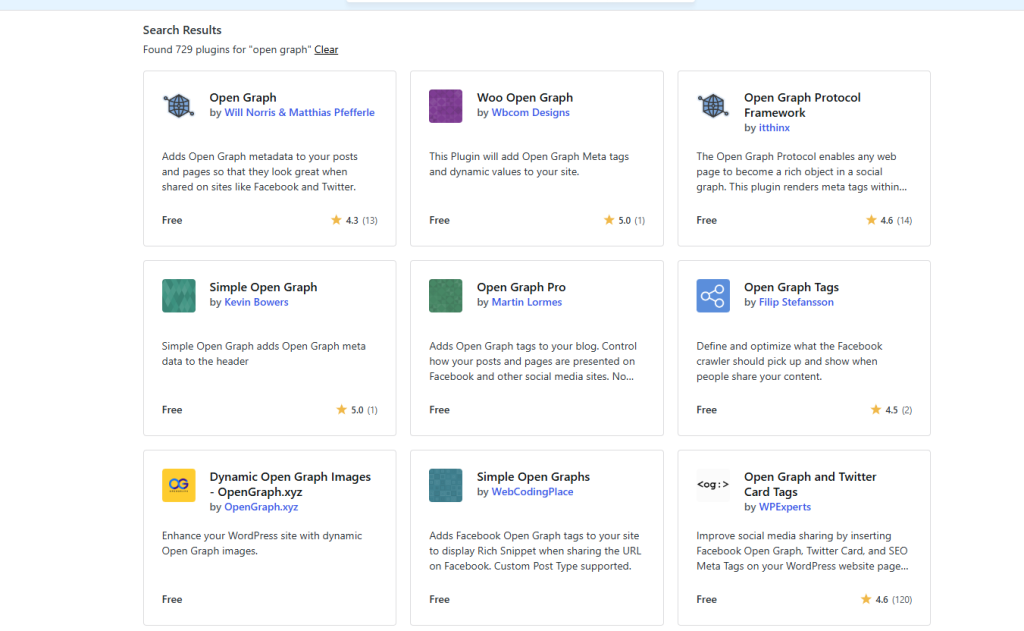AgentOps helps developers see inside their AI agents by logging every prompt, action, and cost. This review explains how it works, its features, setup, and why it’s becoming the go-to debugging tool for AI developers.
The 5-Minute Guide to Open Graph Data

Open Graph data is a powerful protocol that enhances how web content is represented and shared across social media platforms. Originally developed by Facebook in 2010, the Open Graph protocol allows web pages to become "rich objects" in a social graph, ensuring that shared links appear visually appealing and informative. This guide delves into what Open Graph data is, how it works, its benefits, and how to implement it effectively.
What is Open Graph Data?
Open Graph data refers to metadata added to a webpage using the Open Graph protocol. These metadata tags define how content appears when shared on social media platforms like Facebook, LinkedIn, Twitter, and others. Instead of relying on platforms to auto-generate previews—which can often be inaccurate or unattractive—Open Graph ensures that shared links display consistent and engaging previews.
For example, when a link is shared on Facebook, Open Graph tags determine the title, description, image, and other elements displayed in the preview 1.
Core Components of Open Graph Metadata

To implement Open Graph effectively, you need to understand its key components. The four essential tags are:
- og:title: Specifies the title of the page as it should appear in the preview.
- Example:
<meta property="og:title" content="The Ultimate Guide to SEO"/>
- Example:
- og:description: Provides a brief description of the page's content.
- Example:
<meta property="og:description" content="Learn actionable SEO strategies to boost your website's rankings."/>
- Example:
- og:image: Defines the URL of an image that represents the page.
- Example:
<meta property="og:image" content="https://example.com/image.jpg"/>
- Example:
- og:url: Sets the canonical URL for the page.
- Example:
<meta property="og:url" content="https://example.com/seo-guide"/>
- Example:
These tags are placed in the <head> section of your HTML document4.
Additional Open Graph Tags
Beyond the basics, there are many optional tags you can use to provide more context:
- og:type: Specifies the type of content (e.g.,
article,video.movie). - og:site_name: Indicates the name of your website.
- og:locale: Defines the language of your content (e.g.,
en_US). - og:image:alt: Describes the image for accessibility purposes.
- og:video and og:audio: Provide multimedia URLs for richer previews 9.
How Does Open Graph Work?
When a webpage with Open Graph metadata is shared on a social platform:
- The platform's crawler fetches the metadata from the
<head>section of your HTML. - The platform uses this data to generate a preview card containing elements like an image, title, and description.
- Users viewing the shared link see an optimized preview that encourages engagement 6.
Benefits of Using Open Graph Data

Implementing Open Graph metadata offers several advantages:
- Enhanced Visual Appeal
- Rich previews with images and descriptions make links more eye-catching compared to plain URLs.
- Increased Click-Through Rates (CTR)
- Posts with optimized previews attract more clicks. For instance, Facebook posts with images have 2.3 times more engagement than those without.
- Control Over Content Presentation
- You dictate how your content appears on social media rather than leaving it to automated systems.
- Improved Brand Visibility
- Consistent branding across platforms builds trust and recognition.
- SEO Benefits
- While Open Graph itself doesn’t directly impact search engine rankings, increased engagement from social shares can drive traffic and improve your overall SEO performance.
Challenges and Limitations
Despite its benefits, there are some challenges associated with Open Graph:
- Privacy Concerns: Metadata can inadvertently expose sensitive information if not configured carefully 5.
- Platform-Specific Behavior: Different platforms may interpret Open Graph tags differently, leading to inconsistencies.
- JavaScript-Based Content: Social media crawlers often cannot access metadata rendered dynamically by JavaScript.
To mitigate these issues, always test your tags using tools like Facebook’s Sharing Debugger or LinkedIn’s Post Inspector.
How to Implement Open Graph Data
Follow these steps to add Open Graph metadata to your website:
- Edit Your HTML
- Add Open Graph tags inside the
<head>section of your webpage. - Example:xml
<meta property="og:title" content="The Ultimate Guide to SEO"> <meta property="og:description" content="Learn actionable SEO strategies to boost your website's rankings."> <meta property="og:image" content="https://example.com/image.jpg"> <meta property="og:url" content="https://example.com/seo-guide">
- Add Open Graph tags inside the
- Use Plugins or Tools
- If you use a CMS like WordPress, plugins like Yoast SEO or Rank Math can automate this process.
- Test Your Tags
- Use debugging tools like:
- Optimize Images
- Ensure images meet platform requirements (e.g., 1200x630 pixels for Facebook).
- Monitor Performance
- Track engagement metrics such as CTRs and shares to evaluate effectiveness 8.
Best Practices for Open Graph Optimization

To maximize the impact of your Open Graph implementation:
- Use high-quality images that are visually compelling.
- Keep titles concise (60–90 characters) but descriptive.
- Write engaging descriptions that encourage clicks.
- Ensure all URLs are canonical and secure (use HTTPS).
- Regularly audit and update metadata for evergreen content.
Conclusion
Open Graph data is an essential tool for anyone looking to optimize their online presence through social media sharing. By implementing this protocol, you can ensure that your links stand out in crowded feeds, drive more traffic to your site, and maintain control over how your brand is presented online.
Whether you're a marketer aiming for higher CTRs or a developer ensuring seamless integration across platforms, mastering Open Graph is a step toward better visibility and engagement in today’s digital landscape.

